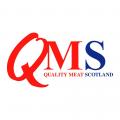
With only a month left for farmers to apply for the AgriScot Scottish Sheep Farm of the Year Award, we look back at previous winners of the prestigious award.
Managing a low input, forage focused system that has recording at its heart is core to the success of Kevin Stewart at Sharpitlaw.
Introducing Highlander genetics to his Kelso farm has proved a revelation for Kevin who is keen to extend the benefits to fellow farmers by producing breeding stock that will thrive on forage.
Since introducing the New Zealand composite breed around 12 years ago, Kevin has seen improvements in stock hardiness and lamb weights. It’s also leads to a more enjoyable farming system.
“We don’t lay a finger on them. They just get on with it and look after themselves,” he says. “It’s about having the correct breed for the farm and the Highlander suits our farm. They’ve been bred to lamb outside in relatively harsh conditions. And sometimes we have lots of grass and sometimes not a lot and they respond well to the peaks and troughs.”
In recent years, Kevin has seen an uplift in demand from farmers looking to drive business efficiencies and sustainability by moving to a low input, forage focused system. It’s this market that he’s been keen to tap into. Although the use of figures to make informed management decision has always been at the heart of the business, recently Kevin has taken this a step further by performance recording his top Highlander ewes, which lamb outside.
This is aided by EID, with lambs tagged within 24 hours of birth and any issues recorded on a handheld device in the field. This goes alongside the usual growth rate and back fat scan information. The aim is to use this information to select the best easy care, forage converting ewes to produce breeding rams for sale.
Kevin explains: “The sheep have to be able to reproduce successfully and go on to grow successfully on a range of forages and produce kilos at weaning. And be in a position to be marketed off forage relatively quickly.”
Forage
The farm’s management strategy hinges around forage. The aim is to avoid concentrate use and instead rely on managing quality grazing leys and producing top spec silage.
Prime lambs remain the mainstay of the business, with lambs finished on red clover aftermarths and perennial ryegrass, white clover, plantain and chicory mixes. Some lambs also move onto turnips which are grown on neighbouring arable farms. Ewes also rely on forage.
“We don’t really use concentrates. We use a small amount of feed blocks as we house our ewes, and we feed blocks to smooth the move from inside to outside,” Kevin explains. “Silage is the mainstay of our winter feed and we try and grow the best quality silage we can. It’s one of the things that’s helped us in the last few years, in that ewes emerge fit and healthy and ready to lamb in peak condition.”
Weighing
In recent years, Kevin has focused on improving ewe condition to help boost lamb survivability. The use of a Racewell handler weigh system and autodrafter allows ewes to be easily split into weight groups at weaning. They will then be managed according to body condition with leaner animals moving on to the best quality pasture. Weights will then be routinely checked, and ewes moved between groups where appropriate. This strategy has resulted in better, more consistent scanning results.
Kevin adds: “You can’t change anything without monitoring. That’s part of what gives you a buzz - if it’s better than last year. And if it’s worse - why?”
The weigh set-up also allows lamb growth rates to be routinely monitored which helps selection and overall efficiencies.
Kevin says: “We weigh them a lot because we can. And when we finish them, we monitor them fairy regularly and look at their daily live weight gains. If the daily live weight gain drops, we’ll slaughter them and focus on the high performers.”
Ultimately, the aim is to create a sustainable system that’s able to cope with the challenges ahead, namely Brexit.
“We produce stock from forage. That’s what we do. And we try and do it with as little cost as possible,” he says. “The nature of the sheep we produce will help us face whatever we have to face.”
Farm Facts
1. Sharpitlaw Farm, Kelso.
2. 490ha.
3. 1,450 ewes - mostly Highlander along with Aberblack, Abermax and Suffolk.
4. 1,200 lambs finished every year and around 180 ram lambs sold as breeding tups.
5. Produce own Highlander replacements.
6. Lamb outside in April. Ewes housed by mid-January.
7. Prime lambs sold deadweight through Farmstock. Aiming for 19kg R3IL carcass.
The business is a breeding partner with a breeding company whose aim is to supply forage reared rams.
Performance Highlights
0.90 lamb survival - up from 0.73. This equates to 17 more live lambs per 100 scanned.
+8-10% increase in scanning percentage over four years: increasing from 180s% to 194%
+25% more stock carried on grassland where rotational grazing has been implemented.
0 - a proportion of ewes will never receive a wormer drench in a year thanks to routine FEC.



Comments: Our rules
We want our comments to be a lively and valuable part of our community - a place where readers can debate and engage with the most important local issues. The ability to comment on our stories is a privilege, not a right, however, and that privilege may be withdrawn if it is abused or misused.
Please report any comments that break our rules.
Read the rules here